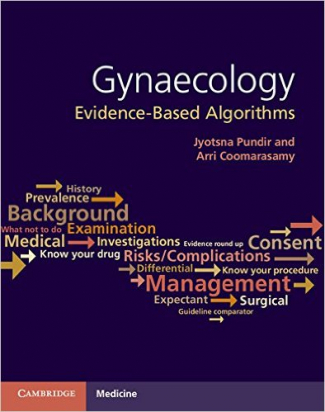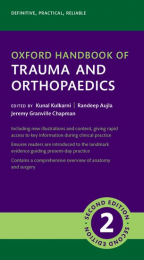Non ci sono recensioni
Clinical research has produced a continuous stream of evidence-based guidelines to guide practice in gynaecology. The guidelines are often widely scattered: this book brings together the essential guidelines in one comprehensive resource. The primary focus is on Royal College of Obstetricians and Gynaecologists and other UK national guidelines; however, many chapters contain a 'Guideline Comparator' box carrying information from important international guidelines. Where there are no UK guidelines, information based on international guidelines is provided; where any guidelines do not exist, available evidence and accepted norms of practice based on expert opinion are detailed. Several chapters also contain a 'what not to do' box, which should act as a source of rich debate. To assist those studying for postgraduate examinations - such as MRCOG - the information is presented in schematic flowcharts, representing a step-by-step method of approaching clinical problems and providing an easy-to-use learning resource.
- Ideal resource for postgraduate examination preparation
- Information is presented in step-by-step flowcharts to problem solving
- Several chapters include a 'what not to do' section
Table of Contents
Preface
List of abbreviations
Part I. Early Pregnancy Care:
1. Early pregnancy bleeding and miscarriage
2. Care of patients requesting termination of pregnancy (TOP)
3. Recurrent first trimester and second trimester miscarriage
4. Gestational trophoblastic disease and neoplasia (GTD, GTN)
5. Ectopic pregnancy
6. Hyperemesis gravidarum (HG)
Part II. Disorders of Menstruation:
7. Dysmenorrhoea
8. Premenstrual syndrome (PMS)
9. Heavy menstrual bleeding (HMB)
10. Fibroids (leiomyoma)
11. Adenomyosis
12. Endometriosis
Part III. Reproductive Medicine:
13. Disorders of sex development (DSD)
14. Primary and secondary amenorrhoea
15. Premature ovarian insufficiency (POI)
16. Polycystic ovarian syndrome (PCOS)
17. Hirsutism
18. Hyperprolactinaemia
19. Precocious puberty (PP)
Part IV. Subfertility:
20. Subfertility: female
21. Subfertility: male
22. Ovarian hyperstimulation syndrome (OHSS)
23. Fertility sparing treatments in gynaecological cancers
Part V. Urogynaecology, Pelvic Floor Problems and HRT:
24. Urinary incontinence (UI)
25. Utero-vaginal prolapse
26. Vault prolapse
27. Menopause and hormone replacement treatment (HRT)
Part VI. Gynaecological Oncology:
28. Epidemiology of cancer in females in the UK
29. Vulval dystrophy and VIN
30. Vulval cancer
31. Cervical intra-epithelial neoplasia (CIN) and colposcopy
32. Cervical cancer
33. Endometrial hyperplasia
34. Endometrial cancer
35. Post menopausal bleeding (PMB)
36. Ovarian cyst
37. Ovarian cancer
Part VII. Sexual and Reproductive Health, STI and Vaginal Infection:
38. Chronic pelvic pain (CPP)
39. Pelvic inflammatory disease (PID)
40. Vaginal discharge
41. Bacterial vaginosis (BV)
42. Vulvo-vaginal candidiasis (VVC)
43. Trichomonas vaginalis (TV)
44. Sexually transmitted infections (STI): general
45. Gonorrhoea
46. Chlamydia
47. Herpes
48. Lymphogranuloma venereum (LGV)
49. Molluscum contagiosum
50. Chancroid
51. Donovanosis – granuloma inguinale
52. Phthirus pubis
53. Scabies
54. Syphilis
55. Ano-genital warts
Part VIII. Contraception:
56. Contraceptive methods: general
57. UKMEC category and definition for the use of the contraceptive method
58. Quick starting contraception
59. Unscheduled bleeding with hormonal contraception (HC)
60. Missed pill
61. Contraceptive choices for young people
62. Contraception for women aged over forty years
63. Post natal contraception
64. Emergency contraception (EC)
65. Long-acting reversible contraception (LARC)
66. Male and female sterilisation
67. Hormonal contraception (HC) and venous thromboembolism
Index.





